Structure Risky Analysis
With the Risky Building Analysis command, risky buildings are determined for low-rise reinforced concrete buildings in existing and reinforced structures. The building information level coefficient is taken into account in the existing material strengths and the risk assessment is made automatically according to the Principles for the Detection of Risky Buildings 2019.
Location of Structure Risk Analysis Command
You can access the Structure Risk Analysis command under the Analysis heading of the ribbon menu Analysis and Design tab.
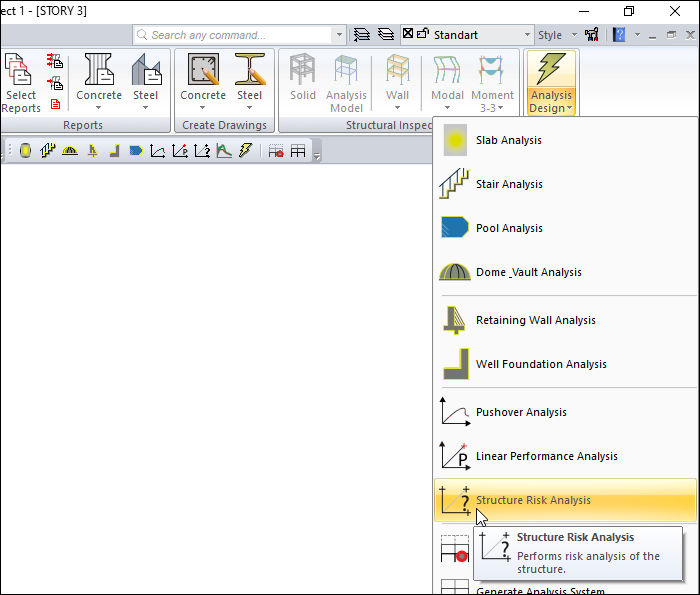
Usage Steps
Click on the Structure Risk Analysis icon under the Analysis Design icon.
The Structure Risk Analysis dialog will open.

Click the OK button after making the selections suitable for your project.
The RYTEIE-2019 Report Settings will be displayed.
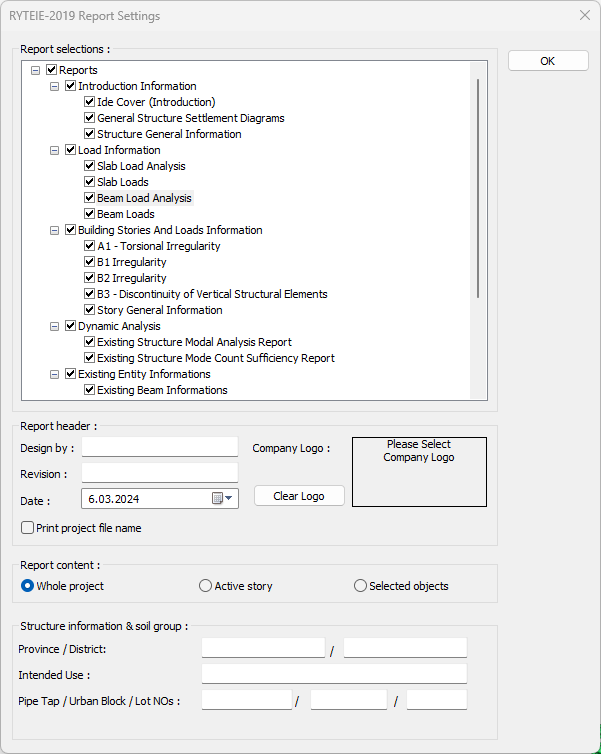
After selecting the appropriate report titles, click the OK button.
The question whether your project is completed will appear on the screen.

When the OK button is clicked, Structure Risk Analysis will start. Pressing the No button will cancel the process.
After the Structure Risk Analysis starts, the Structural Analysis Status window will open. Operation steps can be followed from this window.
After the analysis is finished, click the OK button in the Structural Analysis Status window.
Results will be given in a report format.
Structure Risk Analysis Dialog
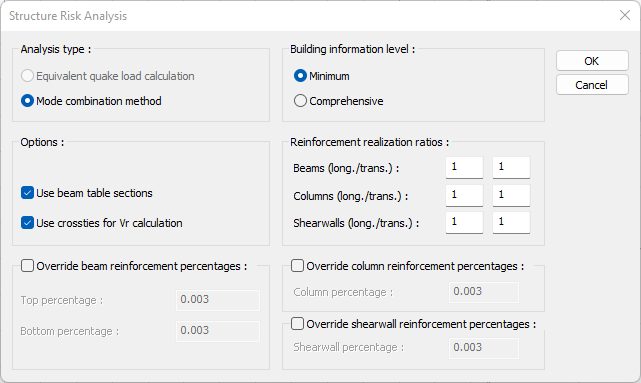
Specifications |
|---|
Analysis type  In the risky building analysis, it is selected whether the earthquake load will be determined according to the equivalent earthquake load method or according to the mode combination method. The equivalent seismic load method can be applied in buildings with a total height above the basement not exceeding 25 meters and a total number of eight floors, and with n bi <=1.4 without considering additional eccentricity. For other cases, the Mod combination method should be applied. |
Building information level  The knowledge level of the building is selected according to the principles given in Table 4.1 in the regulation published for the determination of risky buildings. When calculating the capacities of the load-bearing elements, the existing material strength is multiplied by the information level coefficient. Knowledge level coefficients; Minimum -> 0.90 Comprehensive -> 1.00 |
Use beam table sections  If ticked, the cross-section of the beam is considered as a plated section and the reinforcements of the floor in the table are added to the existing reinforcement areas of the beams. If it is not marked, the cross section of the beam is considered as a rectangular section and the reinforcements of the floor in the table are not included in the existing reinforcement areas of the beams. |
Use crossties for Vr calculation  If marked, the crossties in the column are added to the column stirrup and taken into account in the calculation of the column shear strength Vr. If it is not checked, it will be ignored. |
Override beam reinforcement percentages 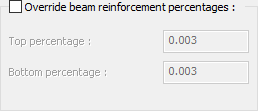 If the option is selected, the beam capacity moments are calculated by taking into account the given pursantage values. |
Override column reinforcement percentages  If the option is checked, the column capacity moments are calculated by taking into account the given pursantage values. |
Override shearwall reinforcement percentages  If the option is selected, the shear capacity moments are calculated by taking into account the given fractional values. |
Reinforcement realization ratios 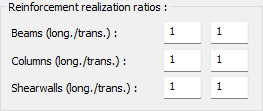 In case the reinforcement realization coefficient is entered, the existing reinforcement areas (whether the reinforcement is entered in the reinforced concrete dialog or calculated according to the defined percentage) are multiplied by these coefficients and the element capacity calculations are made according to these values. |
Next Topic
Related Topics
